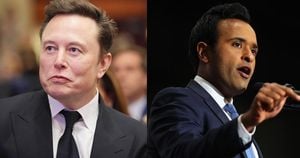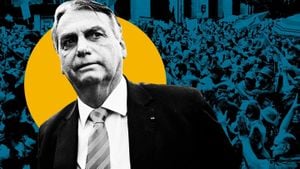On November 12, 2024, authorities across Europe announced the dismantlement of a large-scale fake art network operating out of Italy. This network, which reportedly involved counterfeit works attributed to high-profile artists like Banksy, Andy Warhol, and Amedeo Modigliani, has raised eyebrows about the extent of art forgery endemic to the European art market. The Italian Culture Ministry confirmed these findings after artworks seized during raids by Italian police revealed attempted manipulations of some of the modern art world's most iconic pieces.
The investigation came to light following reports of suspicious auction sales where artworks claimed to be originals were sold for extravagant sums. Such auctions attracted collectors and investors, lured by the promises of acquiring genuine artworks at potentially lucrative prices. The authorities' actions have drawn attention to the rigorous standards required to authenticate contemporary art, which can often become murky when profit is at stake.
Leading the operation was Italy's Cultural Heritage Minister, whose office coordinated closely with other European law enforcement agencies. Testing protocols and investigative methods were employed to trace the origins of the artworks up for bid. Police discovered artworks composed of various materials, from spray paint to mixed media, all manufactured with the intent of mimicking the styles of these renowned artists.
During the raids, law enforcement uncovered forgers using state-of-the-art technology, such as high-resolution scanning and replication techniques, to create convincing counterfeits. This crafty deception has set off alarm bells within the art community, prompting discussions about the necessity for elevated standards and practices for verifying artwork authenticity.
One notable case involved a purported Banksy piece, whose controversial style — reflective of social commentary and provocation — had sold at auction for over €1 million. Under investigation for authenticity, experts sampled material compositions and analyzed the artwork's provenance, which eventually revealed it as counterfeit. Experts highlighted the risks buyers face, asserting the importance of due diligence when purchasing art, especially on the auction block.
Critics have long argued the art market lacks sufficient transparency, and this event seems to validate their concerns. High-profile sellers and galleries often authenticate works through subjective narratives, potentially misrepresenting or obscuring the origins of artworks. This situation begs the question—how many more similar forgeries might be circulating under the radar?
Another artist, Andy Warhol, famous for his Campbell's Soup Cans and Marilyn Monroe prints, became embroiled within the scandal as various forgeries of his works were also discovered. The police investigations revealed the net of deception spreading across several European countries, implicatively indicating the international nature of the crime. These forgeries targeted vulnerable collectors, some of whom had invested life savings chasing dreams of art ownership.
The fallout from this vast scheme is expected to ripple through the art world, with European auction houses pledging to heighten their verification protocols. Collectors have voiced apprehension, calling for industry leaders to establish stringent measures to prevent future high-stakes cons. Many are advocating for innovations such as blockchain technology, which could provide transparent, immutable records of artwork history, ensuring provenance remains intact.
While the cultural commentary behind these artists' works is relevant, what also strikes as concerning is their role as financial assets. Onlookers, including investors and art enthusiasts alike, now face scrutiny not just for the narratives surrounding art but also for the quality of the assets themselves. The staggering amounts of money involved with art sales can lead individuals to overlook details due to the allure of prestige, making the need for vigilance more pressing than ever.
This issue isn't isolated to famous names like Banksy and Warhol; rather, it highlights the broader underbelly of the art business, where forgeries can emerge from any angle, particularly targeting the unsuspecting. Art experts warn potential buyers to remain informed, state their inquiries clearly, and request adequate documentation prior to any transaction.
The revelations of this scandal serve as powerful reminders about the importance of authenticity and integrity within the art market. With the dust settling on this dramatic bust, authorities will likely work to refine their strategies against such fraud, aiming to hold accountable those seeking to profit from deception.



